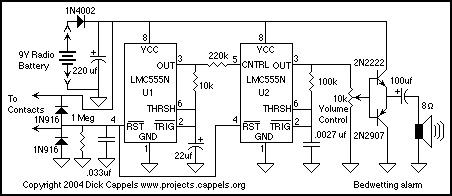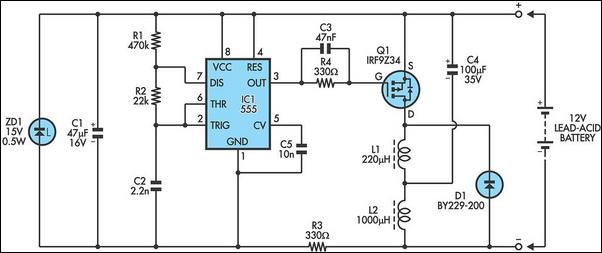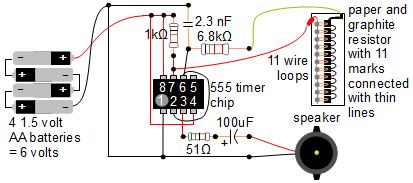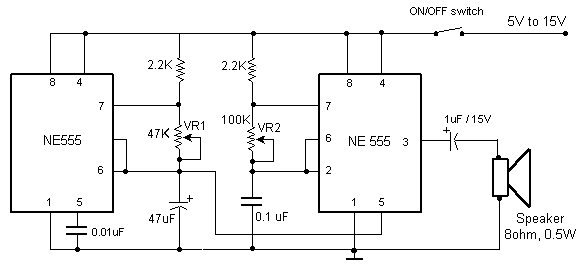
metal detector 555 timer
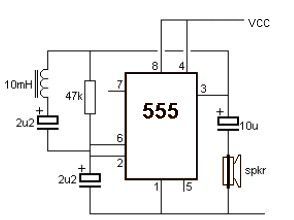
This metal detector electronic project schematic circuit is designed using a simple 555 timer integrated circuit. The schematic circuit requires a few external electronic components.
The metal detector circuit utilizes the 555 timer IC in astable mode to generate a frequency that is modulated by the presence of metal objects. The basic configuration includes the 555 timer, resistors, capacitors, and a speaker or buzzer to provide audio feedback when metal is detected.
In the schematic, the 555 timer is connected with two resistors and a capacitor to set the oscillation frequency. When metal is introduced into the detection area, it alters the inductance of a coil connected to the circuit, which in turn affects the timing characteristics of the 555 timer. This change in frequency is perceived as a change in tone or pitch from the output device, alerting the user to the presence of metal.
The circuit may also include a potentiometer to allow for sensitivity adjustments, enabling the user to fine-tune the detection range based on environmental conditions. Additionally, a simple LED indicator can be integrated to provide a visual cue alongside the audio signal, enhancing user experience.
Overall, this metal detector project represents an accessible and educational introduction to basic electronics and signal processing, demonstrating the practical application of the 555 timer IC in detecting metallic objects.This metal detector electronic project schematic circuit is designed using a simple 555 timer integrated circuit. As you can see in the schematic circuit, this metal detector electronic project requires few external electronic parts.
🔗 External reference
The metal detector circuit utilizes the 555 timer IC in astable mode to generate a frequency that is modulated by the presence of metal objects. The basic configuration includes the 555 timer, resistors, capacitors, and a speaker or buzzer to provide audio feedback when metal is detected.
In the schematic, the 555 timer is connected with two resistors and a capacitor to set the oscillation frequency. When metal is introduced into the detection area, it alters the inductance of a coil connected to the circuit, which in turn affects the timing characteristics of the 555 timer. This change in frequency is perceived as a change in tone or pitch from the output device, alerting the user to the presence of metal.
The circuit may also include a potentiometer to allow for sensitivity adjustments, enabling the user to fine-tune the detection range based on environmental conditions. Additionally, a simple LED indicator can be integrated to provide a visual cue alongside the audio signal, enhancing user experience.
Overall, this metal detector project represents an accessible and educational introduction to basic electronics and signal processing, demonstrating the practical application of the 555 timer IC in detecting metallic objects.This metal detector electronic project schematic circuit is designed using a simple 555 timer integrated circuit. As you can see in the schematic circuit, this metal detector electronic project requires few external electronic parts.
🔗 External reference
